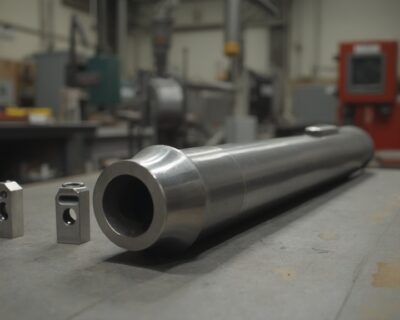Blogs

Exploring the Unique Applications and Benefits of Monel Metal in Industry
Introduction
Monel, a remarkable nickel-copper alloy often referred to as Monel metal, is distinguished by its unique composition and exceptional properties that make it invaluable across various industries. With a makeup of approximately 65-70% nickel and 20-30% copper, Monel offers extraordinary resistance to corrosion, particularly in challenging environments like seawater. Its high tensile strength, toughness, and stability at elevated temperatures further enhance its suitability for demanding applications.
As global offshore wind capacity is projected to increase significantly by 2040, the relevance of materials like Monel in renewable energy projects becomes increasingly evident. This article delves into the unique properties of Monel, its unparalleled corrosion resistance, vital applications in marine engineering, and the cost-benefit analysis for its industrial use, providing procurement managers with essential insights for strategic decision-making.
Unique Properties of Monel Metal
Monel, an exceptional nickel-copper alloy, comprises approximately 65-70% nickel and 20-30% copper. This unique composition offers remarkable resistance to corrosion, particularly in seawater and other harsh environments. Its exceptional mechanical characteristics, including high tensile strength and toughness, render it perfect for challenging uses. The material’s ability to remain stable at high temperatures further enhances its utility across various industrial sectors. For instance, the material’s application in offshore wind farms, where harsh environmental conditions prevail, showcases its durability and reliability. As stated by the International Energy Agency, worldwide offshore wind capacity is anticipated to rise fifteen times by 2040, emphasizing the increasing importance of materials used in renewable energy initiatives.

High Corrosion Resistance
The remarkable durability against rust highlights one of its most significant characteristics. In marine environments, where saltwater exposure typically accelerates the degradation of lesser metals, this alloy’s resilience ensures durability and longevity. This resistance to deterioration extends to harsh chemicals, including sulfuric and hydrochloric acids, making this alloy an optimal choice for chemical processing applications. The alloy’s ability to resist pitting and stress corrosion cracking further enhances its reliability in critical components. According to the International Energy Agency, the growth of offshore wind capacity—expected to rise fifteen-fold by 2040—highlights the need for materials that can endure the challenging conditions linked to renewable energy setups.

Applications in Marine Engineering
The distinct characteristics of this alloy make it an excellent option for marine engineering uses, especially in the building of essential marine equipment such as pumps, valves, and propeller shafts. Its exceptional resistance to corrosion in seawater conditions significantly enhances the durability of these components, leading to reduced maintenance costs and extended service life. This is evidenced by Smoker Craft, a leader in marine innovation since 1903, which has consistently utilized a high-performance metal in their high-end marine equipment. The alloy’s application extends to shipbuilding and offshore structures, emphasizing its critical role in the maritime industry. Furthermore, the 2024 State of the Science report emphasizes the significance of substances used in marine renewable energy initiatives, showcasing their low environmental footprint and strong performance. This makes the material not just a practical choice, but also a sustainable one, aligning with the industry’s move towards more eco-friendly solutions.

Cost-Benefit Analysis for Industrial Use
Although this material may initially seem more costly than others, its long-term benefits often warrant the greater upfront expenditure. This nickel-copper alloy is renowned for its exceptional durability and resistance to corrosion, which translates into significantly lower maintenance and replacement costs over time. Considering that equipment malfunctions can result in significant downtime and safety hazards in different sectors, the dependability provided by this material becomes an essential element. For example, firms focused on industrial upkeep have progressively opted for innovative substances such as nickel-copper alloy to reduce risks and guarantee operational stability.
A thorough cost-benefit analysis should encompass not just the initial expenditure but also the long-term savings related to the application of Monel. According to the predictive maintenance market analysis, utilizing advanced substances can lead to significant cost reductions by decreasing the frequency and severity of equipment failures. This approach aligns with the broader trend towards performance-based design standards, which aim to optimize resource efficiency and minimize unnecessary restrictions.
Morgan Advanced Materials highlights the significance of utilizing innovative substances to address intricate challenges and enhance resource efficiency. Their global footprint and dedication to innovation highlight the importance of investing in materials like this specific alloy. Therefore, for procurement managers, the strategic decision to invest in Monel can lead to enhanced asset performance and lower life cycle costs, making it a wise choice for long-term operational efficiency.

Conclusion
Monel’s unique composition as a nickel-copper alloy, comprising 65-70% nickel and 20-30% copper, positions it as an essential material in various industrial applications. Its extraordinary resistance to corrosion, particularly in marine environments, coupled with high tensile strength and stability at elevated temperatures, makes it a standout choice for demanding applications. As the global offshore wind capacity is set to increase significantly by 2040, the importance of Monel in renewable energy projects cannot be overstated.
The corrosion resistance of Monel is particularly noteworthy, ensuring longevity and reduced maintenance costs in harsh conditions. This property is critical not only in marine engineering but also in chemical processing applications, where exposure to aggressive substances is common. Monel’s ability to withstand pitting and stress corrosion cracking further solidifies its reliability, making it indispensable in critical components of offshore structures and marine hardware.
While the initial cost of Monel may be higher than other materials, a comprehensive cost-benefit analysis reveals that its durability and reduced maintenance needs often justify the investment. The long-term savings associated with decreased equipment failures and operational downtime emphasize the strategic value of Monel in industrial settings. For procurement managers, the decision to utilize Monel aligns with performance-based design standards and enhances resource efficiency, ultimately leading to improved asset performance and lower lifecycle costs.
Investing in Monel represents a forward-thinking approach to material selection, ensuring sustainability and reliability in an evolving industrial landscape.
Explore our range of high-performance Monel alloys today to elevate your industrial applications!




